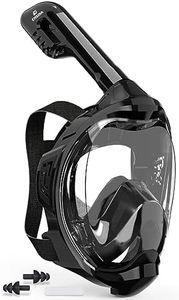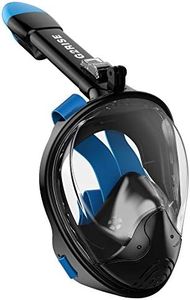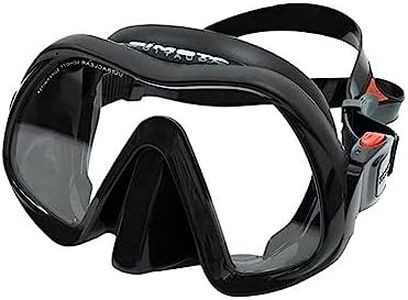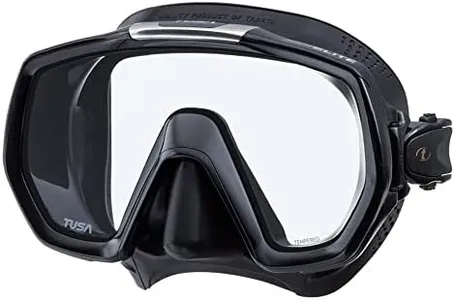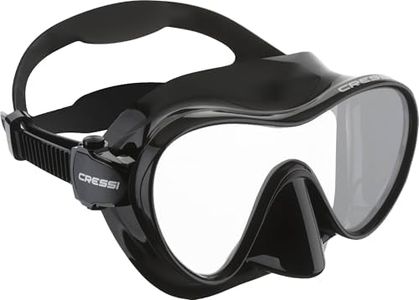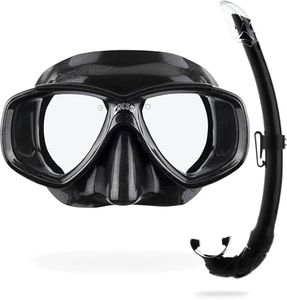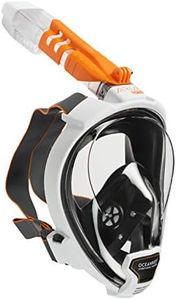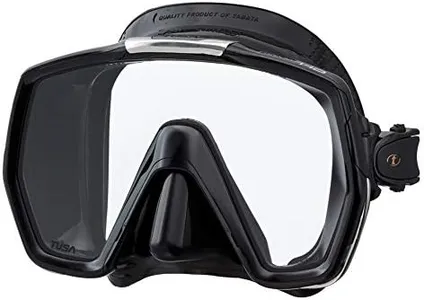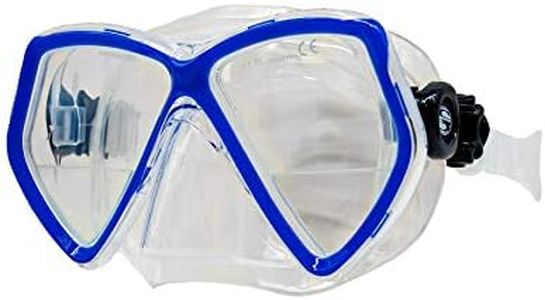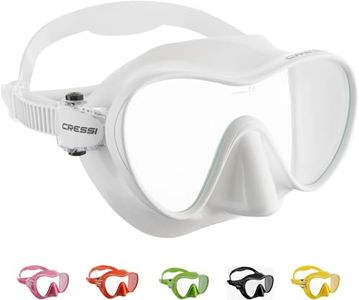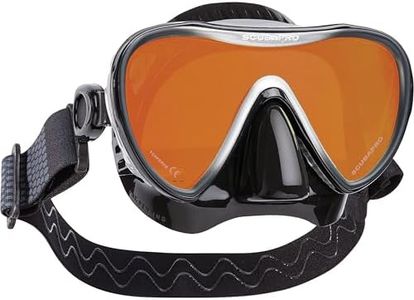We Use CookiesWe use cookies to enhance the security, performance,
functionality and for analytical and promotional activities. By continuing to browse this site you
are agreeing to our privacy policy
10 Best Diving Masks
From leading brands and best sellers available on the web.Buying Guide for the Best Diving Masks
Choosing the right diving mask is essential for comfort, safety, and visibility underwater. A well-fitted mask will prevent leaks, reduce fogging, and allow you to enjoy the underwater world with clear vision. The fit, lens type, and skirt material directly impact your experience, so knowing what to look for ensures you pick a mask that matches your needs and preferences.Fit and SealFit and seal refer to how well the mask sits on your face and maintains a watertight seal. This is crucial because a poor fit can lead to leaks and discomfort. Masks come in various shapes and sizes to accommodate different face shapes. To find the right fit, place the mask on your face without using the strap and inhale slightly through your nose; a properly fitted mask will stay in place without air leaks. If you wear the mask with the strap and feel pressure points or significant gaps, it's likely not the right fit. Always try different shapes and sizes to see which one adheres to your face comfortably.
Lens TypeLens type refers to the design and material of the viewing window of the mask. Lenses can be single (one large piece), double (two separate pieces), or even multiple for panoramic views. Single lenses often offer a more open field of vision, while double lenses can fit closer to the face, reducing internal volume and making it easier to clear water. Mask lenses are usually made of tempered glass for safety, as it resists shattering. Choose a lens type based on the field of view you prefer and whether lower internal volume is a priority for the types of diving you plan to do.
Skirt MaterialThe skirt is the part of the mask that makes contact with your face and forms the seal. Most high-quality masks use silicone skirts, which are soft, flexible, and durable. Silicone is preferred because it creates a better seal and is less likely to cause skin irritation. Some basic masks use plastic or rubber, but these are generally less comfortable. Look for soft, high-grade silicone, and check that it molds well to your face without feeling too stiff or too thin.
Field of ViewField of view is about how much area you can see when wearing the mask. A wider field of view makes your underwater experience more enjoyable and allows you to spot more sea life. Masks with larger or uniquely shaped lenses, or those with side windows, increase peripheral vision but may sit farther from the face, increasing internal volume. Consider what you value more: panoramic vision or a more compact, close-to-face design. If you’re new to diving, try different styles to see which feels most natural.
Internal VolumeInternal volume is the amount of air inside the mask when it’s worn. A lower internal volume mask is easier to clear if it floods and requires less effort to equalize (blow air into the mask as you descend). This is particularly important for freediving and spearfishing, as it saves energy. For recreational scuba divers, medium volume masks are often a good balance between comfort and ease of use. Consider your intended diving activities when deciding how much importance to place on internal volume.
Strap and Buckle SystemThe strap and buckle system secures the mask to your head and allows you to adjust the tightness. Quick-adjust buckles and wide silicone straps provide better comfort and are easier to adjust while wearing gloves or with wet hands. Some masks have buckles that pivot or adjust at the skirt, which can help with a more secure and comfortable fit. Whichever system you choose, ensure you can easily make adjustments without losing the seal on your face.
